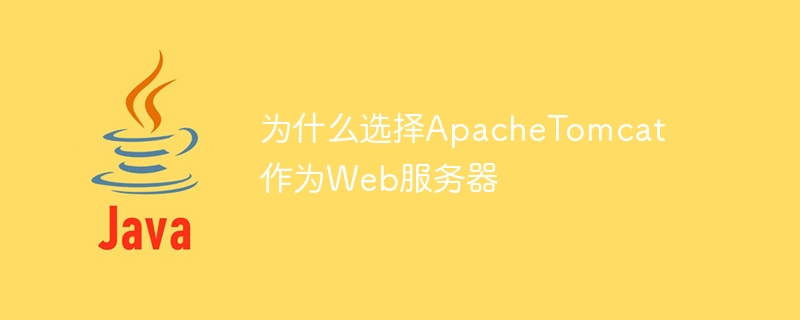

Why choose Apache Tomcat as a Web server? Specific code examples are needed
Abstract: Apache Tomcat is an open source Java Servlet container that is widely used in JavaWeb applications. deploy. This article will explore the reasons why Apache Tomcat was chosen as the web server and provide some specific code examples.
Introduction:
In the process of building a Web application, it is crucial to choose a suitable Web server. A web server is software used to receive and respond to HTTP requests from clients. As a commonly used web server, Apache Tomcat has many important functions and features, making it the preferred web server for many developers.
1. Reliability and Stability
As an open source project that has undergone long-term development and testing, Apache Tomcat has good reliability and stability. It can handle a large number of concurrent requests and remains stable under high load conditions. This is especially important for web applications that need to handle large numbers of user requests.
2. Openness and flexibility
Apache Tomcat supports multiple operating systems and development languages, including but not limited to operating systems such as Windows, Linux, macOS, and development languages such as Java, PHP, and Python. This allows developers to choose a development environment that suits them and flexibly configure it according to actual needs. In addition, Apache Tomcat also supports various databases, such as MySQL, Oracle, etc., allowing developers to easily integrate various database operations.
3. Powerful performance and scalability
Apache Tomcat has good performance and scalability and can support large-scale web applications. The design and implementation of its Servlet container is very efficient, allowing for rapid response when processing HTTP requests. In addition, Apache Tomcat also supports various pluggable components, such as connectors, caches, etc., allowing developers to expand and optimize according to actual needs.
4. Security and Reliability
Apache Tomcat provides a wealth of security features, including but not limited to SSL/TLS support, access control, etc. Developers can set security settings for Tomcat through configuration files to protect the data security and user privacy of web applications. In addition, Apache Tomcat also regularly releases security updates to fix known vulnerabilities and improve security.
5. Easy to use and rich documentation support
Apache Tomcat is easy to use, allowing developers to quickly get started and develop. In addition, Tomcat also has a large number of documentation and tutorial resources for reference. Developers can get help and support by viewing official documentation and community discussions.
Specific code example:
The following is a simple example showing how to use Apache Tomcat to create a simple Servlet application.
import javax.servlet.*;
import java.io.IOException;
public class HelloServlet implements Servlet {
ServletConfig config;
public void init(ServletConfig config) throws ServletException {
this.config = config;
}
public void service(ServletRequest request, ServletResponse response) throws ServletException, IOException {
response.setContentType("text/html");
PrintWriter out = response.getWriter();
out.println("<html><body>");
out.println("<h1>Hello, Tomcat!</h1>");
out.println("</body></html>");
}
public void destroy() {
}
public ServletConfig getServletConfig() {
return config;
}
public String getServletInfo() {
return "HelloServlet";
}
}<web-app xmlns="http://xmlns.jcp.org/xml/ns/javaee"
xmlns:xsi="http://www.w3.org/2001/XMLSchema-instance"
xsi:schemaLocation="http://xmlns.jcp.org/xml/ns/javaee
http://xmlns.jcp.org/xml/ns/javaee/web-app_3_1.xsd"
version="3.1">
<servlet>
<servlet-name>hello</servlet-name>
<servlet-class>HelloServlet</servlet-class>
</servlet>
<servlet-mapping>
<servlet-name>hello</servlet-name>
<url-pattern>/hello</url-pattern>
</servlet-mapping>
</web-app>Conclusion:
As a powerful and stable Java Servlet container, Apache Tomcat has many important functions and features, making it the preferred web server for many developers. This article explains the reasons for choosing Apache Tomcat as the web server and provides a simple code example to help readers better understand and use Apache Tomcat. Whether you are a beginner or an experienced developer, choosing Apache Tomcat is a wise choice.
The above is the detailed content of Reasons why you choose Apache Tomcat as your web server. For more information, please follow other related articles on the PHP Chinese website!




